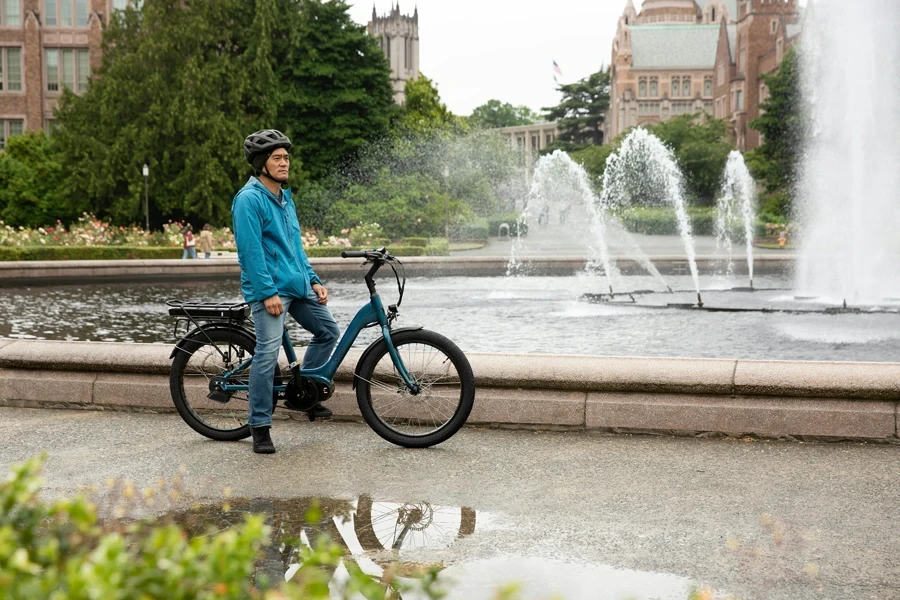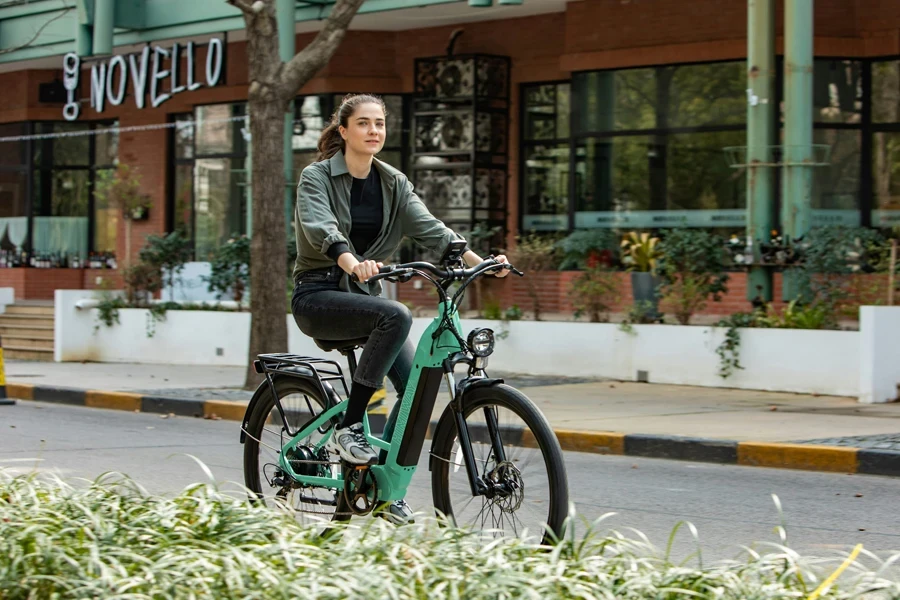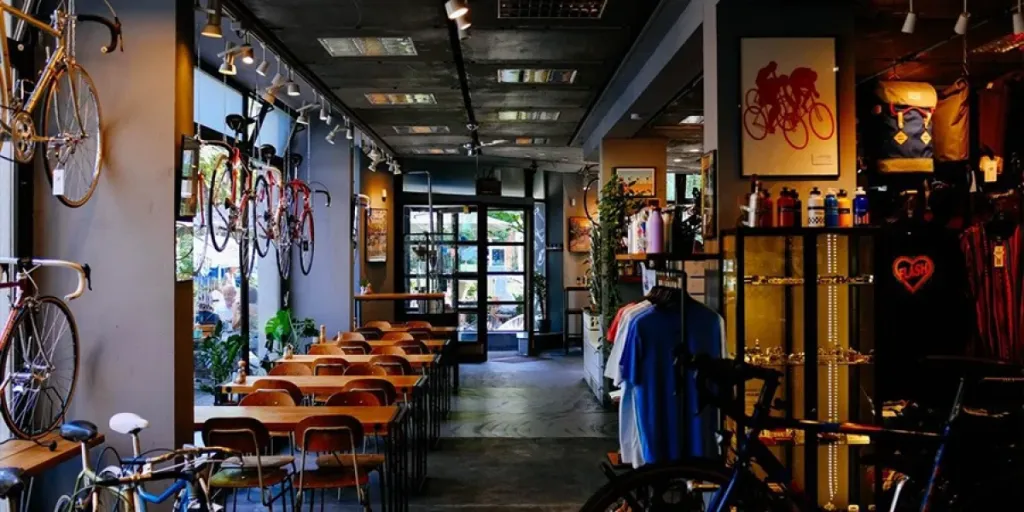Table of Contents
● Introduction
● Market overview: Growth, demand, and future trends
● Key technology & design innovations in electric city bikes
● Top-selling models driving market trends in electric city bikes
● Conclusion
Introduction
Electric city bikes are transforming urban commuting with their blend of advanced technology and convenience, offering sustainable, efficient travel for city dwellers. Driven by innovations in battery life, motor efficiency, and smart connectivity, these bikes cater to diverse urban needs, from daily commuting to cargo hauling. As the market surges toward $148.7 billion, top models are leading the charge, setting new standards for mobility and performance in 2025.

Market overview: Growth, demand, and future trends
The worldwide electric bike market was valued at around $43.6 billion in 2023 and is expected to reach $148.7 billion by the end of 2032. It is predicted to grow at a compound annual growth rate of 14.6%, this is according to Fortune Business Insights. Technological advancements in battery efficiency, sustainability, and motor power mainly drive this expansion, positioning e-bikes as crucial for eco-friendly urban commuting. The rising fuel costs and also the global shift toward sustainable alternatives make e-bikes increasingly popular, mostly in urban areas where they provide a convenient solution to traffic congestion and even play a big part in reducing commuting costs.
Thanks to favorable policies and advanced manufacturing capabilities, Asia-Pacific leads the market, with countries like China and Japan pushing growth through stringent emission regulations. Europe comes second with strong government support, including incentives and infrastructure investments, which further help drive adoption. In North America, e-bike sales are rising steadily, supported by initiatives like tax credits and the development of dedicated cycling infrastructure. According to a report by Markets and Markets, e-bike sales in the U.S. went up by 40% in 2022 as Americans look for cleaner and more affordable ways to commute within urban spaces. These mentioned trends show a global transformation in how people move in urban areas, with electric bikes as a vital part of this shift.

Key technology and design innovations in electric city bikes
Lithium-ion battery technology has significantly advanced, increasing capacity, efficiency, and range. Modern lithium-ion batteries offer double the voltage and up to three times the capacity compared to traditional lead-acid batteries, significantly enhancing e-bike range and longevity, according to Fortune Business Insights. In the urban e-bike market, models with capacities between 451W and 650W are particularly popular, providing a balanced mix of range and weight, ideal for daily commutes. Additionally, rapid-charging technologies are emerging, reducing charge times and enabling urban riders to recharge quickly between commutes. These innovations are critical in making electric city bikes more practical and reliable for everyday use.
E-bike motors have evolved considerably, primarily focusing on hub-drive and mid-drive systems. Hub motors, commonly integrated into rear wheels, are popular in city bikes for their simplicity and lower maintenance. In contrast, mid-drive motors near the bike’s crankset offer improved torque, range, and balance, making them ideal for varied terrains and inclines. Mid-drive motors also improve efficiency, enabling longer rides on a single charge. According to Bicycling Magazine, models like the Bosch-powered Gazelle Medeo and Aventon’s Adventure series utilize advanced motor technology to offer a smooth, natural pedaling experience essential for navigating urban landscapes comfortably.
Integrating Bluetooth and GPS technology has redefined the user experience in electric bikes, allowing riders greater control over their ride. Users can now monitor battery life, set assistance levels, track routes, and receive real-time navigation updates through dedicated apps. Many premium city bike models have app connectivity, enabling personalized ride settings and diagnostics. According to Fortune Business Insights, this trend is particularly popular in high-tech markets, with companies like Trek incorporating GPS-enabled systems into models designed for commuter reliability. These technologies enhance user convenience and provide security features like remote bike location tracking.

Safety advancements have become essential in electric city bike design, with features like hydraulic disc brakes and integrated LED lighting now standard on many models. Hydraulic brakes offer superior stopping power, which is especially crucial for heavier e-bikes traveling at higher speeds. Built-in LED lights improve visibility during night commutes, while turn signals on models like the Aventon Aventure enhance rider awareness. Additionally, stability enhancements, such as wider tires and low-step frames, provide a more balanced, secure ride on urban roads, addressing a critical need for commuter safety. According to Bicycling Magazine, these safety features are instrumental in making e-bikes a dependable choice for urban mobility.
Top-selling models driving market trends
For urban commuters, models like the Gazelle Medeo T9 City lead the market with features designed for efficient, comfortable rides in city environments. Equipped with Bosch Active Line motors, the Medeo T9 City provides smooth pedal assistance that enhances daily commutes, making it a popular choice among city riders, according to Bicycling Magazine. This model also includes practical commuter additions, like fenders, a rear rack, and integrated lights, adding value and safety for those navigating busy urban roads. Aventon’s Level.2 is another top commuter model, featuring a torque sensor for a smoother, controlled ride and premium details such as hydraulic disc brakes and a full-color display.
Models like the RadRover 6 Plus and Aventon Adventure.2 exemplify the growing demand for cargo and fat-tire e-bikes that accommodate various urban and off-road requirements. RadRover 6 Plus, with its powerful 750W motor and rugged frame, is designed to handle city streets and gravel paths, making it suitable for commuters and adventurers alike, as noted by Wired. Similarly, Aventon’s Aventure.2 combines a 750W motor with fat tires, enhancing stability and comfort on rougher surfaces. These bikes address a niche for riders who need extra power and durability to carry loads or tackle challenging terrain, making them essential to the expanding e-bike market.

The rising popularity of budget-friendly e-bikes like Lectric’s One eBike underscores the demand for affordable yet well-equipped models. Priced under $2,500, the Lectric One offers features commonly found in higher-end bikes, such as a low-maintenance belt drive and a powerful 750W motor, according to Fortune Business Insights. This model particularly appeals to riders who want reliable performance without a premium price tag, catering to a broader demographic within the urban commuter market.
Compact and foldable models like Ride1Up’s Portola meet the needs of urban riders who require a bike that fits into small spaces or can be stored indoors. The Portola features a 750W motor, foldable frame, and hydraulic disc brakes, making it both powerful and practical for city dwellers with limited storage, as highlighted by Bicycling Magazine. These models contribute to the e-bike market by offering flexibility and portability, which is especially beneficial for apartment dwellers or commuters who combine cycling with public transit.

Conclusion
Electric city bikes are transforming urban commuting by providing efficient, eco-friendly options that meet the needs of modern city life. As their technology evolves—with advancements in battery life, motor design, connectivity, and safety features—these bikes continue to gain popularity worldwide. This shift reflects a broader trend toward sustainable urban mobility, offering a compelling solution for reducing traffic, emissions, and the cost of daily commutes. With innovations driving demand, electric city bikes are set to play a pivotal role in reshaping how we navigate and experience urban spaces.




